

| Return to Index |
|
Paper 60 A Second Selection of Balls from 1808Contributed by Paul Cooper, Research Editor [Published - 17th November 2022]This paper continues an investigation into historical society balls that were held by the British in the year 1808. We began this investigation in a previous paper, this document continues the process by considering a further selection of events documented in British and Colonial newspapers that same year. There is no connecting theme to link the events, they're just a selection of balls that were referenced in the press in 1808. The events studied here are chosen as they offer some small insight into the tunes and dances that were enjoyed, we'll go on to investigate those tunes further below. The tunes and dances that we'll consider further in this paper are:
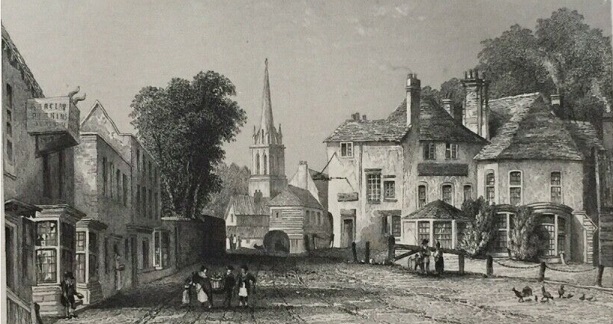 Figure 1. An image of Leatherhead Church, c.1838.
Figure 1. An image of Leatherhead Church, c.1838.
Leatherhead Public BallThe first ball of 1808 that we'll study in this paper is an unusual departure from our more typical events, it was a public ball held at Mr Brewer's premises near Leatherhead. This establishment was presumably an Inn or Tavern in the locality, tickets for the ball would have been sold to the general public. The event was briefly described in The Oracle newspaper for the 2nd of January 1808. They wrote (with dance references highlighted in bold): On the evening in question the ball was opened by Lord de Blaquiere (1732-1812) with a local lady, the daughter of a banker. The Hankey family were prominent bankers, one of them would go on to become a director or the Bank of England. The Miss Hankey who led off the first dance at this ball may have been Miss Elizabeth Hankey (1786-1870), she would have been around 21 years old at the date of the ball. Her father, Thomas Hankey of Fethcham Park, a banker of Hankey & Co, is reported to have left her £12000 on his death in 1793. She lived at Fetcham Park, a stately home on the outskirts of Leatherhead.Lord De Blaquiere opened the ball, on Tuesday evening last, at Mr Brewer's, near Leatherhead, with Miss Hankey, the Banker's daughter. His Lordship is in his 75th year. The first dance in compliment to the Lady, was Money in both Pockets, and the second Auld Robin Gray. Her partner, Lord Blaquiere was unusually old at 75 to be participating in a country dance, leading off a country dance could be an energetic experience, dances could frequently last for twenty or thirty minutes. The first tune to have been danced is one that we have studied before, Money in Both Pockets, it was a popular tune that had circulated from around the year 1790; you might like to follow the link to read more. The second tune of Auld Robin Gray will be studied further below. Unfortunately that's all that we I can say about this event, the newspaper only printed a few lines of text to describe it.
Brighton Pavilion BallOur next event was of a very different nature, it was a Ball and Supper hosted by the Prince of Wales in celebration of his Birthday at his personal pleasure palace of the Royal Pavilion, Brighton. The Pilot newspaper for the 16th of August 1808 reported (with dance references highlighted in bold): 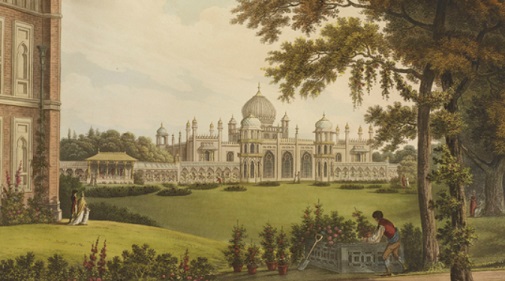 Figure 2. One of Repton's 1808 designs for the Royal Pavilion. Image courtesy of the Royal Collection Trust.
Figure 2. One of Repton's 1808 designs for the Royal Pavilion. Image courtesy of the Royal Collection Trust.
August 14 - The Ball and Supper at the Pavilion last night, given by his Royal Highness the Prince of Wales, was an entertainment by far the most grand and brilliant ever witnessed in this part of the world. The company began to assemble soon after eight o'clock, and before nine nearly four hundred of the most distinguished individuals had entered the Chinese Palace. This is a fascinating description of a Ball held at Brighton, we've previously studied two similar balls that held there in the year 1817, you might like to follow the link to read more. Around twenty percent of the guests who were present were reported to have been dancing on this occasion, they did so in the Egyptian Gallery. Four tunes are named as having been danced to, three of which we've studied in previous papers: Lady Montgomery's Reel, The Fairy Dance and Morgiana. We'll investigate the remaining tune The Honey Moon below. It's possible that these four tunes formed the entire dance programme for the Ball, they were certainly all popular at this 1808 date. We're informed that the only member of the royal party to dance was Prince Adolphus, the Duke of Cambridge (1774-1850), his partner was the approximately twenty year old Miss Mary Seymour (c.1798-1848). Mary was a daughter of Lord Hugh Seymour (1759-1801) and a favourite of the Prince of Wales. She had been adopted at a young age by the Prince's longtime companion Mrs Fitzherbert (1756-1837), some accounts suggest that Mary might even have been an illegitimate daughter of the Prince and Fitzherbert. Be that as it may, the guests evidently enjoyed the entertainments immensely.
Barbados Ball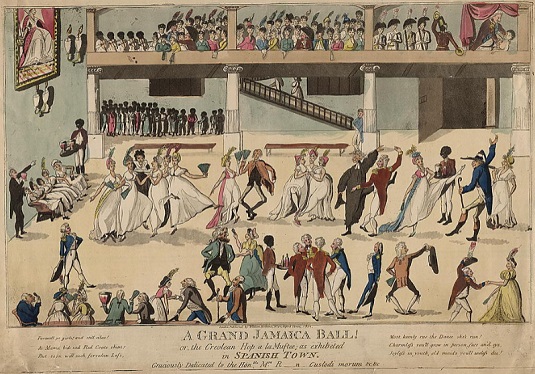 Figure 3. A Grand Jamaica Ball, 1802. Image courtesy of the Library of Congress.
Figure 3. A Grand Jamaica Ball, 1802. Image courtesy of the Library of Congress.
Our next event of 1808 is unusual in a different respect, it was a Ball held in colonial Barbados in the Caribbean islands. The Barbados Mercury newspaper for the 16th of July 1808 recorded (with dance references highlighted in bold): It is no little satisfaction to us, however, that we have the strongest evidence of a mutually subsisting cordiality and friendship between our Navy (and no less with the Army) and the inhabitants at large, manifested by a courteous interchange of good offices and reciprocal sociability. Since the Squadron of the Line has been on this station, the Officers, as occasion offered while they lay in our port, have had frequent parties on board, and in two or three instances have given very handsome entertainments to the Ladies, as well as the Gentlemen of the Island; and in the mean time, have partaken of much hospitality on shore. As a compliment generally to the whole of them, a number of the most respectable inhabitants gave, by subscription, a very elegant Ball on Wednesday evening last, at the Temple; to which, as more flattering to the Navy, all the principal Officers of the Army were also invited; and, notwithstanding the early part of the evening was very boisterous and attended with heavy rain, the Ball-room exhibited, by ten o'clock, a numerous and brilliant assemblage of the fair sex, and was attended by almost all the expected guests, either of the Army or Navy. Sir Alex Cochrane, Commander of the Squadron, Rear-Admiral Pickmore, Capt. Barton, Capt. Worsley, Capt. Wolley, Capt. Maude, and other Captains; a number of Lieutenants and other Ward-room Officers, and a large batch of young Middies, formed a considerable Naval circle; while that of the Military was chiefly composed by Lieut-Gen Beckwith, Commander of the Forces; Brig.-Generals Gledstanes, Sir Charles Shipley; Lieut.-Col. Frederick, Commissary-General Whitmore, Major Clifton, and the Aides-de-Camp and Brigade-Majors of the Generals, and some others of equal rank and respectability. Country dances commenced withCape Trafalgar, and was led off by Mr Mayers (Member for this Town) and Mrs Gledstanes; two sets of about forty each were formed, and the Ladies in general seemed to vie for Naval partners, who, emulous of the honour, chiefly engrossed the dance. It was kept up with much spirit until twelve o'clock, when the company retired to Supper, at which Mrs Mayers, conducted by Sir Alex Cochrane, presided. -The King,and other patriotic toasts being given,The Wooden Walls of Old England-success to the Squadron under Rear-Admiral Cochrane,was drank with flowing bumpers and thrice repeated cheers; after which the Admiral gaveThe Ladies of Barbados,which seemed to vibrate from the tongue to the heart, as it was repeated along the range of the table. Soon after one, Dancing was resumed, and it was not until five in the morning that the whole party had retired. The people of Barbados held a ball by subscription in order to entertain the officers of the British army and navy. The guests of honour included: Sir Alexander Cochrane (1758-1832), Francis Pickmore (c.1756-1818), Sir George Beckwith (1753-1823), Sir Albert Gledstanes (1750-1818) and Sir Charles Shipley (1755-1815). Britain had established a colony on the island of Barbados back in the 17th century, by our date of 1808 there was a large community of people with British and Irish heritage living on the island, alongside a much larger population of enslaved Africans who cultivated the tobacco and cotton crops. An important slave revolt occurred in Barbados in 1816, this was known as Bussa's rebellion; this was yet to happen at our date, the conditions that led to the rebellion would have been very much the same however. We've discussed how the institution of Slavery intersects with that of the British Ballroom in another paper, you might like to follow the link to read more. It seems improbable that anyone of African heritage would have been present at this Ball except in a menial capacity, perhaps as depicted for a Jamaican Ball of 1802 that can be seen in Figure 3. A single tune is named as having been danced at this Ball, Cape Trafalgar, we'll investigate it further below.
Two Kentish Balls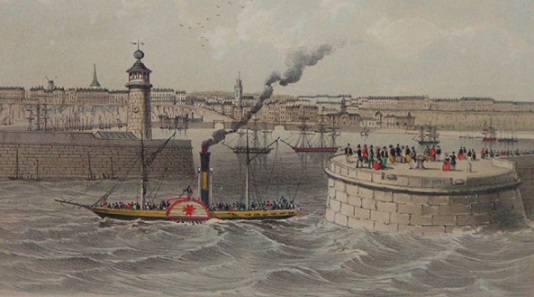 Figure 4. A view of Ramsgate from the Sea courtesy of RareOldPrints.com.
Figure 4. A view of Ramsgate from the Sea courtesy of RareOldPrints.com.
Two balls were held in or near the resort town of Ramsgate in quick succession in September of 1808. The first was described in The Pilot newspaper for the 27th of September 1808 (with dance references highlighted in bold): Ramsgate, Sept 25 - ... On the same night a Ball was given at Barfield's Library, Broadstairs, under the patronage of the Hon. Mr Carleton. It was decidedly the most elegant thing of the kind the season has produced. The room was brilliantly illuminated, and decorated with flowers and sweet smelling shrubs. At an early hour the Ball was opened by the Hon. Capt. Grey and the amiable Miss Heathcote, with a new dance,The Tars of Victory. The dancing was kept up with great spirit throughout. There were present a great number of Officers besides from the Barracks of Deal and Sandwich. The second ball was described in the Morning Post newspaper for the 30th of September 1809, they wrote (with dance references highlighted in bold): Mr Le Bas' Benefit Ball, was last evening distinguished by unusual brilliancy and eclat. The company was numerous and fashionable; they exceeded in number 350 persons. The assembly rooms were magnificently illuminated. Precisely at half-past nine o'clock, the ball was opened, with a very popular dance here, calledThe Happy Return,by Colonel de Blaquiere and the Hon. Miss Powis, the amiable daughter of Lady Lilford. Two sets were formed with twenty couple in each; great spirit and elegance were displayed in the dances. The Misses Onslow, Hartopp, and Powis, absolutely fascinated the Beaux by their animated and inimitably graceful movements inthe mazy round. Refreshments were served out about midnight, and at half-past two in the morning, the dancing ceased. Every person seemed to retire from the rooms well pleased with the entertainment. The display of female beauty, elegance, and fashion, was superior to any thing of the season; for though the town is not full, the charms of the evening (moonlight), and the interest of the sight, procured the presence of almost every person of rank in the island. The first of these two events was held at Barfield's Library in Broadstairs, we've previously written about an 1810 ball held at the same venue. The second of the two events was hosted by the Master of Ceremonies at Ramsgate, Mr Le Bas, we've written of his annual ball for 1809 before. Our first was opened by Captain Grey (someone who's identity I cannot confirm), the second by the same Lord de Blaquiere (1732-1812) who opened the Leatherhead Ball we wrote about above. Prominent dancers at the second ball probably included the daughters of Thomas Onslow (1754-1827) (who would go on to become the second Earl of Onslow) and of Edward Clive, Earl of Powis (1754-1839). Two tunes are named as having been danced at these events, Tars of the Victory and The Happy Return, we'll study them both further below.
Folkestone Assembly BallA further Kentish ball was held in the town of Folkestone in October 1808 that was described in the Kentish Chronicle newspaper for the 7th of October 1808. They briefly wrote (with dance references highlighted in bold): There's not much we can say about this ball, other than to recognise that another tune has been named that we'll investigate further below.Folkstone Assemblies - The first monthly subscription assembly at the Apollo-room, on Wednesday last, was attended by a small, but select party; the favorite new dance ofSpanish Patriotscommenced the evening, and dancing was continued with much spirit. We are happy to find that the respectable manner in which the present assemblies are conducted, promise a numerous and fashionable attendance.
Ball at the Castle Assembly Rooms, Brighton Figure 5. A Representation of the Grand Saloon at Brighthelmstone, one of the Castle Assembly Rooms c.1780. Image courtesy of the Sussex Archaeological Society.
Figure 5. A Representation of the Grand Saloon at Brighthelmstone, one of the Castle Assembly Rooms c.1780. Image courtesy of the Sussex Archaeological Society.
Our final ball for 1808 is a return once again to Brighton, this time we'll study a Ball held at the public assembly rooms at the Castle Tavern. The Star newspaper for the 19th of October 1808 wrote (with dance references highlighted in bold): The refined pleasures that were enjoyed at the Castle Rooms, at the Master of the Ceremonies' Ball, on Thursday evening, is still the current topic of fashionable conversation. The number of elegant individuals there exceeded considerable five hundred, an assemblage, excepting on particular occasions, the Prince's birth-day balls, for instance, greater than ever was known before. The company began to assemble soon after seven o'clock, and before eight various families from Worthing, Rottingdean, Lewes, and even Eastbourne, had arrived. Before nine o'clock the ball-room was crowded, all the rank and beauty of this place being also there.... [a long list of fashionables follows]
On this occasion we get to investigate a Ball held at Brighton without royal patronage. The venue was the Castle Assembly Rooms. The 1815 An Epitome of Brighton described them as follows: Our ball of 1808 was hosted by the Master of the Ceremonies presumably the freshly appointed Mr Forth, we're informed that some 500 or more people attended and 120 danced. Three tunes are named as having been danced; one of them, The Labyrinth we've studied before, we'll consider the other two further below. Some of the dancers from the ball are named too. Unusually that list consists only of ladies (no gentlemen are named) and several of them were married. The lists of dancers printed in newspapers would usually name couples, most of those named would be young people of marriageable age; there again, most such lists name those dancing at a private ball, not at a public Assembly Room, the conventions dictating who would dance may have been quite different at the Assembly Rooms.
Auld Robin GrayThe first dance in compliment to the Lady, was Money in both Pockets, and the second Auld Robin Gray.(Leatherhead Public Ball) 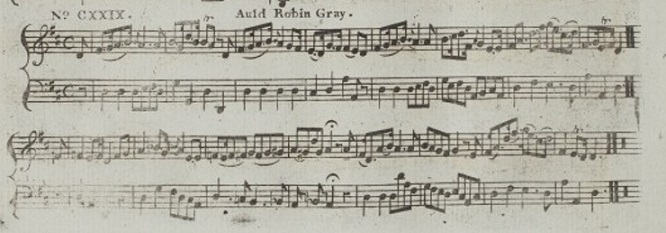 Figure 6. Auld Robin Gray from Thompson's c.1789 The Caledonian Muse.
Figure 6. Auld Robin Gray from Thompson's c.1789 The Caledonian Muse.
The first new tune to have been mentioned at one of our 1808 balls was named Auld Robin Gray. It's a relatively obscure dancing tune that wasn't widely published in London at this time, it's therefore a little unexpected to find it named as having been danced at our ball. This is however a useful reminder that just because a tune was old doesn't mean that it wasn't still enjoyed, there may have been hundreds of similarly uncommon tunes that remained in circulation at public balls. This particular tune was named after a Scots ballad written by the poet Lady Anne Lindsay (1750-1825) in 1772 and set to music by the Rev. William Leeves of Wrington. It was originally published anonymously in 1783, Lady Anne was revealed to be the author in the Scots Magazine for the 1st of May 1805; they wrote:
Several musical arrangements of Auld Robin Gray have circulated, as would both sequels and new musical works inspired by it. For example, the Caledonian Mercury for the 14th of March 1785 referred to
At least two different tunes named Auld Robin Gray were published in tune books, only one (as far as I can discern) had been arranged for dancing to. This particular version had been published by the Thompson publishing dynasty in London c.1789 in their Caledonian Muse collection of scarce and favourite Scots Tunes (see Figure 6). This version was arranged in two 8-bar strains of music as might be expected of a dance. It was subsequently published in Edinburgh by Nathaniel Gow in the first part of his Vocal Melodies of Scotland at some point in the 1810s, Gow described this arrangement as the I know of no other references to this tune having been danced at fashionable events, nor of any other arrangements of the tune for dancing (until, that is, later in the 19th century). For further references to the tune, see also: Auld Robin Gray (1) at The Traditional Tune Archive.
The Honey Moon... This air was succeeded by the Fairy Dance, the Honey Moon, and Morgiana(Brighton Pavilion Ball) 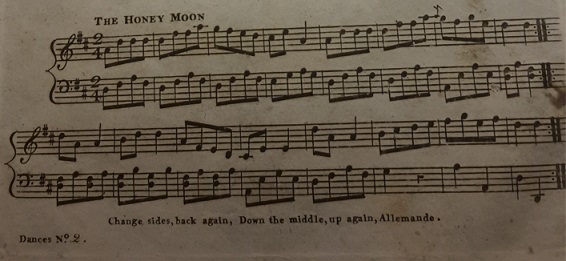 Figure 7. The Honey Moon from Button & Purday's c.1806 2nd Number
Figure 7. The Honey Moon from Button & Purday's c.1806 2nd Number
The Honey Moon is the name of a comic play that was performed at London's Theatre Royal in Drury Lane from January 1805. There was some speculation as to the author of the play, the Morning Chronicle for the 1st of February 1805 wrote:
A tune variously referred to as The Honey Moon or The Favorite Dance in the Honey Moon (and by similar names) circulated shortly thereafter. It was this tune that would have been danced at our 1808 ball. The Daily Advertiser newspaper for the 9th of February 1805 advertised The Honey Moon at Drury Lane and noted the inclusion of
References to the tune being danced socially emerge from 1805. The Evening Mail newspaper for the 2nd of August 1805 mentioned a ball at which We've animated a suggested arrangement of the Button & Purday version of c.1806 (see Figure 7), of the Skillern & Challoner version of c.1806 and of Wheatstone & Voigt's version of c.1806. For further references to the tune, see also: Honeymoon (Country Dance) at The Traditional Tune Archive.
Cape TrafalgarCountry dances commenced with Cape Trafalgar, and was led off by Mr Mayers (Member for this Town) and Mrs Gledstanes; two sets of about forty each were formed(Barbados Ball) 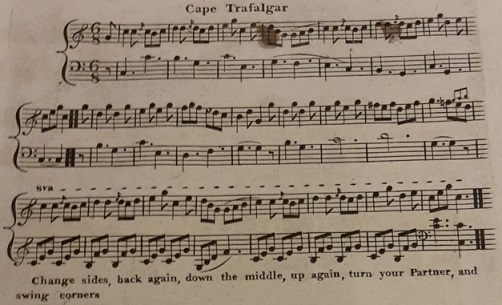 Figure 8. Cape Trafalgar from Skillern & Challoner's c.1806 2nd Number.
Figure 8. Cape Trafalgar from Skillern & Challoner's c.1806 2nd Number.
The name It is no surprise that a tune named Cape Trafalgar would circulate shortly thereafter. Tunes were frequently named in reference to battles or other newsworthy events, naming a tune in such a patriotic fashion increased the probability of its success. Our tune is readily identifiable as it was published many times in London around the year 1806. A precise sequence of publication cannot be determined but examples include: Goulding's c.1806 8th Number, Walker's c.1806 12th Number, Hannam's c.1806 1st Number, Skillern & Challoner's c.1806 2nd Number (see Figure 8), Davie's c.1806 15th Number, James Platts's c.1807 2nd Number and the Preston collection of 24 Country Dances for 1807. It was evidently a favourite tune around the year 1806, I've not found any examples of it being reprinted thereafter. Nor have I found any evidence of it being danced at society balls, other than at our Barbados ball of 1808. That it was being danced in Barbados in mid 1808 is interesting. It demonstrates that this new tune had found its way across the Atlantic ocean within a year or two of first publication in London. We might speculate that some of the London music sheets featuring the tune had found their way around the world with the merchant navy in the preceding months. Presumably the fashionable elite in Barbados desired the latest tunes from London, along with other similar commodities. This particular tune was selected for use at the Ball in compliment to the naval guests of honour, some of whom could potentially have served in the Battle itself. It's a useful reminder that dance tunes circulated freely and could travel widely. We've animated suggested arrangements of the Campbell version of c.1806 and of the Skillern & Challoner version of c.1806 (see Figure 8).
Tars of the Victorythe Ball was opened by the Hon. Capt. Grey and the amiable Miss Heathcote, with a new dance, The Tars of Victory.(First Kentish Ball) 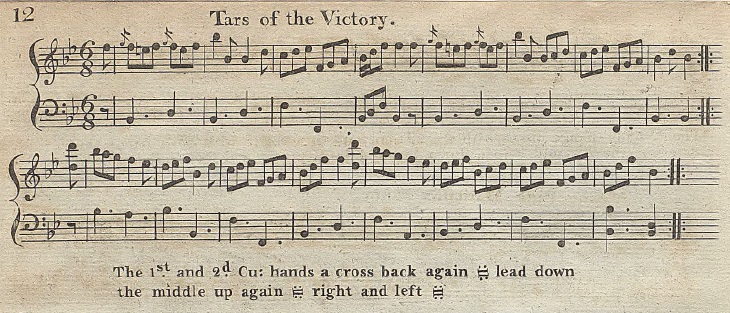 Figure 9. Tars of the Victory from Campbell's c.1808 23rd Book
Figure 9. Tars of the Victory from Campbell's c.1808 23rd Book
We've just studied one Trafalgar themed tune, we now we get to study another: The Tars of the Victory. The word The tune of this name probably began circulating in 1806. It was published numerous times in both 1807 and 1808, its popularity waned thereafter. A precise chronology of publication can't be known but examples include: Goulding's c.1807 9th Number, Skillern & Challoner's c.1807 3rd Number, Bland & Weller's collection of 24 Country Dances for 1807, Button & Purday's c.1807 5th Number, Hannam's c.1807 3rd Number, Monzani's c.1808 8th Number, Campbell's c.1808 23rd Book (see Figure 9), Wheatstone & Voigt's c.1808 2nd Book, James Platts's c.1808 5th Number, Dale's c.1808 12th Number and Andrew's c.1808 15th Number. The tune was also named in Thomas Wilson's 1809 Treasures of Terpsichore and Edward Payne's 1816 New Companion to the Ballroom publications. The tune featured at our Ball in 1808, that's the only social reference to the tune being danced that I've found; the tune was sufficiently widely published that it must have been fairly popular, especially as Edward Payne referred to it in his publication as late as 1816. We've animated a suggested arrangement of the Campbell version of c.1808 (see Figure 9). For further references to the tune, see also: Tars of the Victory at The Traditional Tune Archive.
The Happy ReturnPrecisely at half-past nine o'clock, the ball was opened, with a very popular dance here, called The Happy Return, by Colonel de Blaquiere and the Hon. Miss Powis, the amiable daughter of Lady Lilford.(Second Kentish Ball) 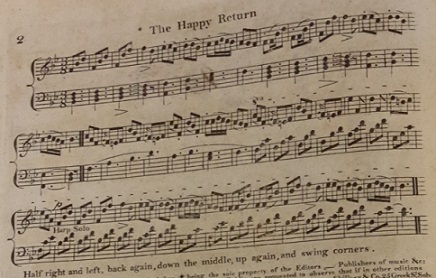 Figure 10. The Happy Return from Skillern & Challoner's c.1809 9th Number.
Figure 10. The Happy Return from Skillern & Challoner's c.1809 9th Number.
A tune named Happy Return was evidently proving popular in the Kentish resorts in 1808, we're informed that it was
The phrase The precise sequence of publication of the tune can't be known but examples include: Skillern & Challoner's c.1809 9th Number (see Figure 10), Clementi's c.1809 6th Book, Dale's c.1811 18th Number and Hodsoll's c.1811 15th Number. The Skillern & Challoner publication made clear that they considered the tune to be subject to copyright, they may have purchased the rights to the tune from the original composer. The tune may of course have been published many other times, my archives are incomplete. We've animated a suggested arrangement of the Skillern & Challoner version of c.1809 (see Figure 10).
The Spanish Patriots & The New Spanish Patriotsthe favorite new dance of Spanish Patriots commenced the evening, and dancing was continued with much spirit(Folkestone Assembly Ball) 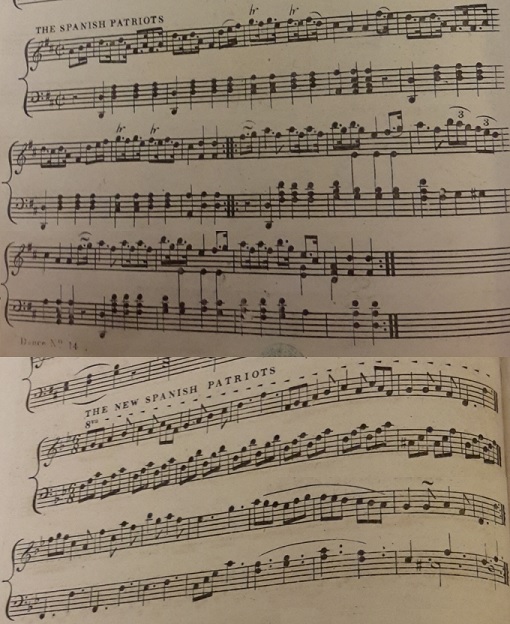 Figure 11. The Spanish Patriots from Goulding's c.1809 14th Number (upper) and The New Spanish Patriots from Goulding's c.1809 16th Number (lower)
Figure 11. The Spanish Patriots from Goulding's c.1809 14th Number (upper) and The New Spanish Patriots from Goulding's c.1809 16th Number (lower)
The Peninsular War began in 1807 when the French and Spanish armies invaded Portugal, it escalated further in 1808 when France occupied its former ally of Spain. An initial Spanish uprising in early May of 1808 was the catalyst for a general Spanish rebellion. Britain became fully involved in the conflict in August of 1808 when an army under Sir Arthur Wellesley (later Lord Wellington) landed in Portugal. The phrase It is perhaps no surprise that a tune should emerge named in reference to the Spanish Patriots. What is surprising is that perhaps ten or so tunes appeared, all circulating approximately concurrently. The multitude of similarly named tunes makes it difficult to discern which would have been danced at our Folkestone event of October 1808. The publishing firm of Goulding & Co. alone published at least four different tunes under substantially the same name. Their first was included in their c.1808 13th Number, this may have been the first tune of this name to be published in London. This initial tune seems not to have been very successful, I know of no further publications of it elsewhere. They published a second tune also named The Spanish Patriots in their c.1809 14th Number (see Figure 11, upper), this second tune is one of the two main candidates for having been danced at our ball, it was widely published within the industry. They published a third tune named The New Spanish Patriots in their c.1809 16th Number (see Figure 11, lower), this tune was also widely published and is the other strong candidate for the tune danced at our ball. They published yet another tune named as The Spanish Patriots in their collection of 24 Country Dances for the Year 1809, they then republished The New Spanish Patriots in their collection of 24 Country Dances for the Year 1810. That's five publications of four different but almost identically named tunes, from a single publisher, within perhaps three years. As we'll see shortly, the rest of the music publishing industry seems to have been similarly confused. Let's set aside for a moment the two strong candidate tunes and focus on the unlikely examples. Two have already been named from the Goulding repertoire; other rarely republished tunes include The Spanish Patriots from the Cahusac collection of 24 Country Dances for 1809, The Spanish Patriots from Skillern & Challoner's c.1809 8th Number (this tune also appeared in Monzani's c. 1810 11th Number), The Patriots of Spain from Walker's c.1809 20th Number and Nathaniel Gow's The Spanish Patriots from his 1815 Select Collection of Original Dances.
Returning to our two main contenders we have the tune named by Goulding as
The second tune, named by Goulding as
Both tunes have been published under the name We've animated a suggested arrangement of the first tune from Wheatstone & Voigt's c.1808 3rd Book, Button & Whitaker's c.1809 11th Number and from James Platts's 1809 11th Number. We've animated a suggested arrangement of the second tune from Skillern & Challoner's 1809 9th Number. We've also animated a suggested arrangement of The Spanish Patriots from Skillern & Challoner's c.1809 8th Number. For further references to the tune, see also: Spanish Patriots (1) (The) at The Traditional Tune Archive.
The Royal Quick Step / The Rout is ComeDancing in three sets, about forty couple in each, commenced at half past nine o'clock, Lady Pomfret having called for the sprightly air of the Labyrinth, and which was succeeded by the Royal Quickstep.(Ball at the Castle Assembly Rooms, Brighton) 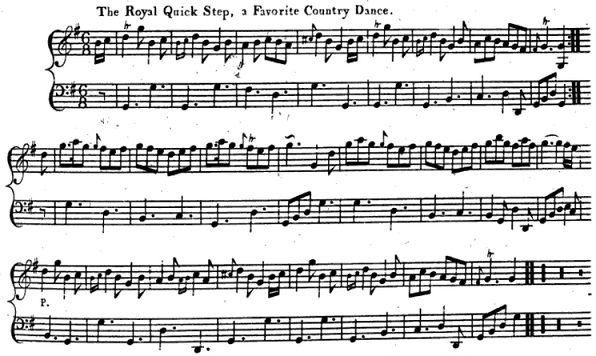 Figure 12. The Royal Quick Step from Nathaniel Gow's c.1800 Master F. Sitwell's Strathspey.
Figure 12. The Royal Quick Step from Nathaniel Gow's c.1800 Master F. Sitwell's Strathspey.
Our next tune is named The Royal Quick Step, it had been widely published in London since around the year 1794. One of the earliest publications of the tune was in Thomas Budd's Fourteen Favorite Cotillons and Country Dances, the Twenty-fourth Book, for the Year 1794. It also appeared at approximately the same date in Thomas Cahusac's Twelve Country Dances for the Year 1794 and also in Longman & Broderip's 1794 Fourth Selection of the most favorite Country Dances, Reels, &c. The term
Other publications of the tune in London include: Fentum's Collection of all the favorite Dances for the Year 1795, Preston's collection of 24 Country Dances for 1795, Preston's c.1795 Second Selection of the most Favorite Country Dances, Reels, &c. and Longman's collection of 24 Country Dances for 1796. Publication then moved to Scotland where an accompaniment for the tune was published by Thomas Calvert in his c.1799 Collection of Marches, Quick Steps, Strathspeys & Reels and by Nathaniel Gow in his c.1800 Master F. Sitwell's Strathspey publication, with the suffix
The tune would have been relatively old fashioned by the 1808 date of our ball if not for the resurgence of its popularity from around 1804. This date coincides with the tune having been danced at a ball hosted by the Prince of Wales in Brighton in 1804; The Star newspaper for the 3rd of January 1804 recorded of a Birthday Ball that We've animated a suggested arrangement of the Cahusac version of 1794. For further references to the tune, see also: Royal Quick Step,The at The Traditional Tune Archive.
The Caledonian Huntdancing, before one, was resumed with the sprightly movement called Caledonia, and was not discontinued until nearly two hours subsequently.(Ball at the Castle Assembly Rooms, Brighton) 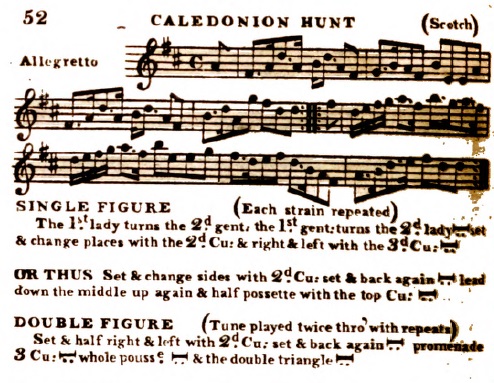 Figure 13. Caledonian Hunt from Thomas Wilson's 1816 A Companion to the Ball Room
Figure 13. Caledonian Hunt from Thomas Wilson's 1816 A Companion to the Ball Room
Our final tune from the selection of 1808 balls is named By far the best known of these tunes, and therefore the single most probable to have been danced at our ball, was named The Caledonian Hunt. The first publication of this tune that I can find was issued in Edinburgh in Niel Gow's 1784 A Collection of Strathspey Reels, Gow gave credit for composition of the tune to Sir Alexander Don (c.1751-1815). Thereafter it would appear in London in Thompson's c.1789 Caledonian Muse publication and also in both Longman's collection of 24 Country Dances for 1795 and Campbell's equivalent collection for 1796. Meanwhile it would reappear in several Scottish publications including the 1794 4th volume of Aird's Selection of Scotch, English, Irish and Foreign Airs, Robert Petrie's c.1799 Third Collection of Strathspey Reels and in Robert Mackintosh's c.1803 A Fourth Book of New Strathspey Reels (under the name The Caledonian Hunt's Delight). Later still it would appear in London in dancing master Thomas Wilson's 1816 A Companion to the Ball Room (see Figure 13), its presence in this later work suggests that the tune was still known and enjoyed in Regency London. Our ball of 1808 had already featured a 1794 tune (The Royal Quick Step) so it's not at all impossible that The Caledonian Hunt, a tune with its origins dating back to the 1780s, would also feature. Whether or not The Caledonian Hunt was danced at our event of 1808 is a matter of speculation, it may have featured or some other similarly named tune may have been danced instead. We've animated a suggested arrangement of Thomas Wilson's 1816 version of Caledonian Hunt (see Figure 13). For further references to the tune, see also: Caledonian Hunt (1) (The) at The Traditional Tune Archive.
ConclusionThe balls that we've encountered in this paper were of diverse types but all were held in the year 1808. We've seen relatively small local events, a major royal event at Brighton, a Ball held in Jamaica, several held in various Kentish towns and a further ball held at the Assembly Rooms in Brighton. We've encountered a variety of tunes recorded as having been danced to at these events, many of which we'd not written about in previous papers. Some of these tunes were relatively obscure, others were highly popular back in 1808. Several tunes had a naval theme that alluded to the 1805 battle of Trafalgar; at least one one was named for what at the time was a current event in the Peninsular Wars, one more was named for the comic play from which it was derived. Some of the tunes have been simple to identify, others remain unidentified with any certainty. If you want to hold an event that recreates a ball of 1808, any of the tunes found within this paper would be very suitable for use. So too would the tunes we've previously written about in a previous paper. And as always, if you have anything further to share on this subject do please Contact Us as we'd love to know more.
|
Copyright © RegencyDances.org 2010-2025
All Rights Reserved